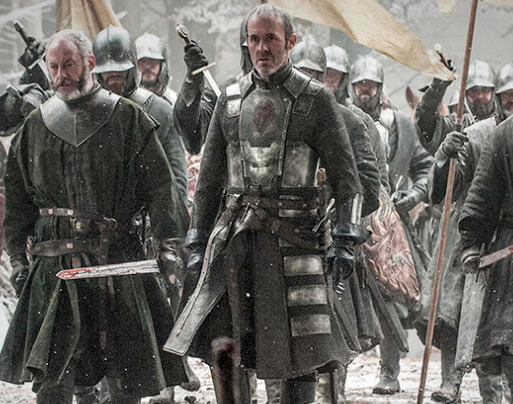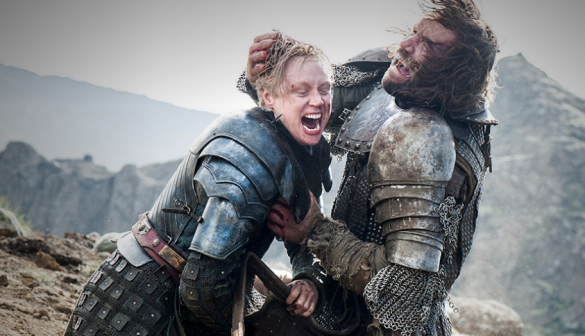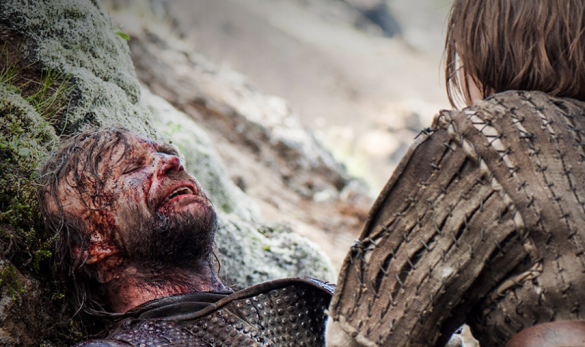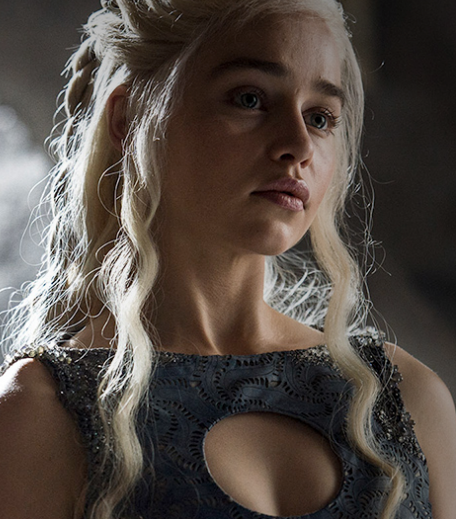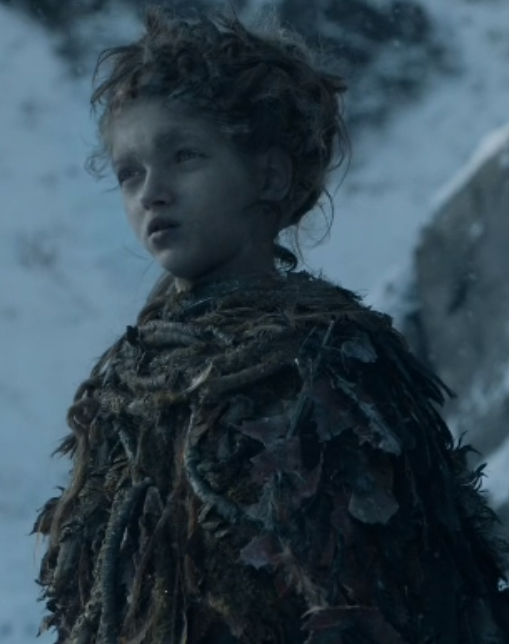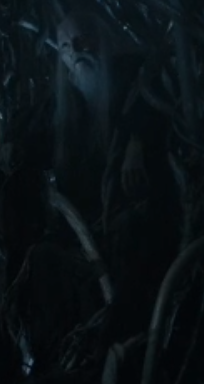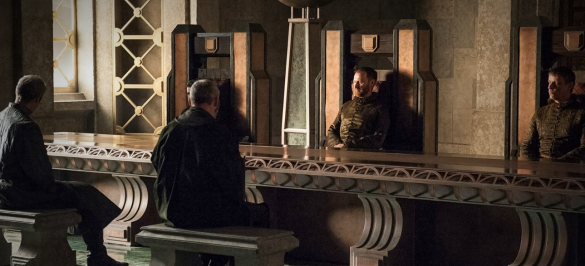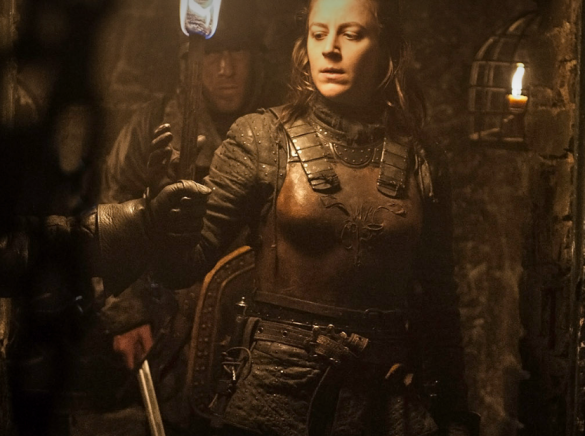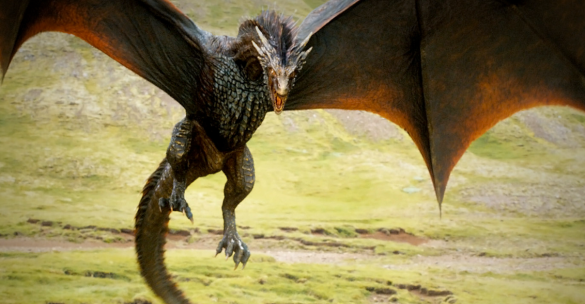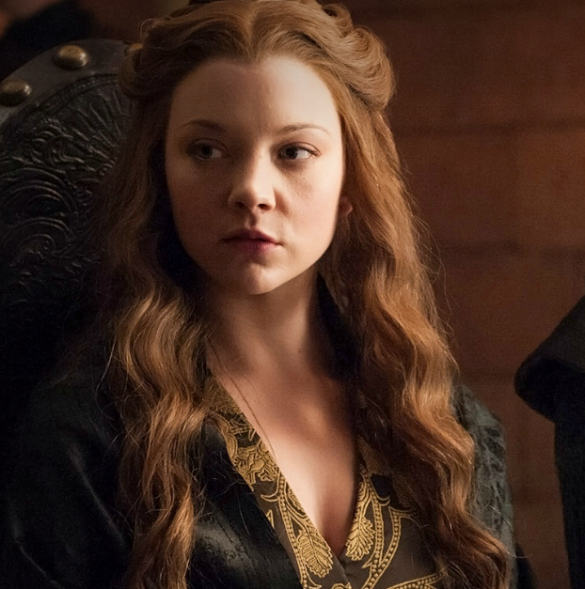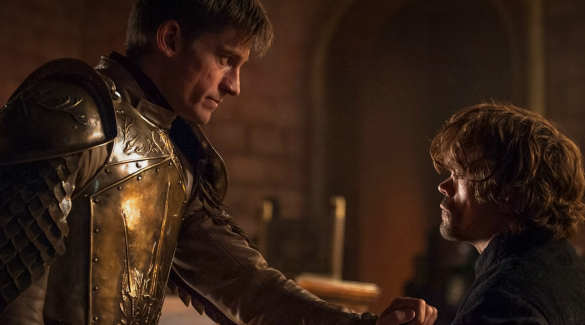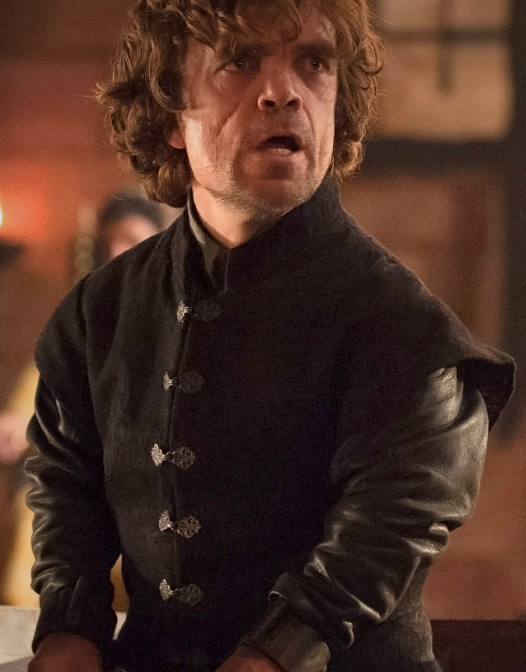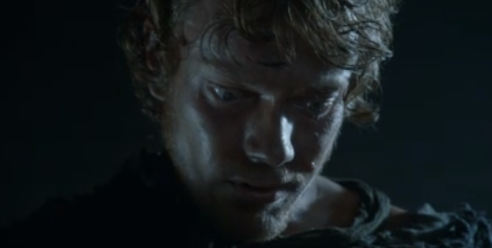Disclaimer: There are no spoilers in this article. Any views or opinions expressed are based solely on where the Game of Thrones TV series currently is and no other knowledge or information is presented in this article.
THE CHILDREN
Last week’s episode took place in just one location and was dedicated entirely to one plot-line. At the other end of the spectrum, the season finale not only catapulted us into the plot-lines of almost every character, but also progressed each of these stories rather abruptly. Outside of Sansa, nearly every character was featured in the finale and each one had a major development in one way or another. In a world where we’ve come to expect rather slow character and plot development, this episode was a smack in the face — a major departure from any episode we’ve seen in four years of Thrones.
But, what was actually so special about this episode? Sure, lots of “stuff” happened pretty quickly, but was there something more to the finale than just tons of action? The answer is yes. There were several layers at the core of the finale which made the episode special and are worth discussing. First, the ways in which several independent plot-lines all of a sudden began to intersect. Second, the many different plot-lines to which the episode’s title, The Children, significantly refers to, and the way these children have been both imprisoned and liberated. And finally, the many ways in which this “game” has changed drastically in just one episode.
CONVERGING STORIES
The finale episode did not only offer up major progressions of each character’s story, but it also offered a taste of the way several of these previously independent plot-lines will begin to merge into one. In any other fictional world, the intersection of characters would probably not be worth mentioning. Why? Because from the onset of almost any story, even if we do not know the exact roles each character will fulfill, we have a basic understanding of the ways each character shares in the world that we are experiencing. And this is just another way that Thrones is completely unique from almost everything else out there.
Rather than a set of characters in a shared world, Thrones is composed of so many characters with story arcs that have remained completely separate from one another, existing in parallel. It’s almost as if we have been watching many different shows — each about a different character with a story unique and exclusive from every other character. Ultimately, this has left us to wonder when, and more importantly, how these independent stories would start to bleed into one another. But in the season finale, some of these questions began to be answered as we were offered a glimpse into the way several characters’ plot-lines will begin to come crashing together. And this — the way the pieces of the puzzle will start to come together — made the finale uniquely special from all other episodes.
Right out of the gate, the plot-lines of Jon Snow and Stannis meet face to face. For so long, we have experienced the independent journeys of each character. Prior to a couple episodes ago when hints began to be offered that Stannis was going to make his way to the Wall, did you ever stop to consider the story-lines of Stannis and Jon Snow coming together? Probably not. But that is exactly what happened. Stannis, a man once committed to taking the Iron Throne which rightfully belonged to him, he later realized that the war over the Throne was meaningless compared to the imminent war in the North involving the Night’s Watch, Wildlings and possibly White Walkers. And Jon Snow, a character who started as a boy and has grown into a man while overcoming his bastard issues, he has infiltrated the Wildlings before making his way back to the Night’s Watch, ultimately appearing completely willing to give his life to defend the Wall. For four seasons we have seen these two characters develop, completely independent of one another. And in the blink of an eye, just like that, their stories come together as Stannis arrives at the Wall and crushes Mance’s camp of Wildlings. The arrival of Stannis has breathed new hope into the war on the Wall, which was all but lost by the Night’s Watch. More significantly, it crosses the paths of Stannis and Jon Snow, and is one of the first hints at the way major characters might begin to intersect one another to reveal the roles they will play in the greater storyline.
Similarly, the journeys of Brienne/Podrick and the Hound/Arya abruptly come together as Brienne stumbles upon Arya on her way to the Vale. For seasons now, Brienne has been on a journey to honor Catelyn Stark and find Sansa. Ironically, it is Arya that she stumbles upon rather than Sansa. Likewise, the Hound has been on a seemingly never-ending journey with Arya, arriving at the Twins just after the Red Wedding, and then getting to the Vale just days after Lysa Arryn was killed. And just like that, these journeys — ones that have developed over the course of so many episodes — come crashing together without any warning at all. But whereas the arrival of Stannis at the Wall gave us hope and probably felt good to watch, the clash of Brienne and the Hound’s stories was not as nice to watch. After Brienne insists on honoring her oath and refuses to leave without Arya, the Hound professes that he is a better fit to look after her. A brutal fight ensues in which Brienne is ultimately victorious and the Hound is thrown over a cliff and possibly left to die.
In the Thrones world, we’ve seen plenty of good guys fighting bad guys. We’ve even seen bad guys fighting bad guys. But this might be the first time that we saw a good guy fight a good guy, which probably left most of us wishing the fight never happened in the first place. In and of itself, the fact that we are calling the Hound a “good guy” speaks volumes to his character development. If you go back and watch the first couple seasons of Thrones, you probably would not have guessed that you would have grown to love the Hound — but most of us have. And after we came to see the warmer, more human side of him, and the many ways he opened up to and cared for Arya, it was painful to see him go down like that — especially in a fight to protect Arya. And as he lay there in brutal shape before the eyes of Arya, the irony of their situation could not have been any greater. Since season one, the Hound has been a name on Arya’s list — one of the people she has committed herself to eventually killing and crossing off her list. She has even told the Hound directly that she will one day kill him. Yet, when the opportunity presented itself, so much so that the Hound actually wanted her to kill him, she would not do it. As he pleaded with her to put him out of his misery, Arya looked on with cold eyes, almost immune to the immense pain you could hear in his voice. Emotionless, she took his gold and left him to die a more painful death than the one she could have offered.
THE CHILDREN AND THEIR LIBERATION
In the Thrones series, the title of each episode is often significant and generally speaks to an underlying message or overtone within each weekly installment. Perhaps more so than ever, the title of the finale, The Children, has many meanings all rolled into one. The most literal meaning, the finale episode refers to many of the characters’ identities which have been defined by the parent-child relationship that they exist within. And generally, these relationships have been imprisoning to several of these characters. But, in the finale episode, things changed for many of “the children,” and several of them were liberated, while others were further imprisoned.
Perhaps more so than any other characters in the show, the three Lannister children have been defined by their roles as children, to none other than Lord Tywin. From the first moments we’ve encountered them, we have known the Lannister siblings as children — their identies almost completely dictated by the fact that they were Lannister children. More times than not, it has seemed that their roles as children have been already decided for them and they’ve often had no free will what so ever. Cercei was used as a tool of marriage, forced to endure King Robert in order to become queen and further the Lannister cause. Jaime was forced to serve on the Kingsguard to the Mad King. And Tyrion was forced into a life of ridicule. Each had a role to play forced upon them as children to Lord Tywin, and for the most part, it seemed as if there was nothing they could do to change this.
But all of that changed in the finale, and we begin to see some of The Children that the episode title refers to. It all begins as Cercei refuses to marry Ser Loras Tyrell, another marriage Lord Tywin is set to force upon her. However, it is not because of her personal preferences or desires that she refuses, but rather a decision dictated by the children of her own. With Joffrey dead and Myrcella shipped off to Dorne, Tommen is the only child she has left, and she refuses to lose him to the self-serving influences of Margaery Tyrell and Lord Tywin. It’s an interesting juxtaposition as the child of Lord Tywin, Cercei, stands up to one of the most powerful men and threatens to do whatever she needs to in order to protect her own child. She tells Lord Tywin the truth of her incestuous relationship with Jaime, and threatens that she will ruin the Lannister legacy by letting it be known to all. She then goes and tells Jaime that he is the one she wants; she no longer wants to hide the truth and does not care what anybody thinks. She liberated herself from the prisoner she had been as a child to Lord Tywin. And, in certain ways, she also liberated Jaime, who was forced to keep his love for Cercei a secret for so many years.
The liberating continues as Jaime frees Tyrion and saves him from imminent execution. While Tyrion was the one literally freed, this was equally liberating for Jaime, who has desperately wanted to save his little brother, but has been ultimately helpless to the will of his father, Lord Tywin, who wanted Tyrion dead. Like Cercei, no longer would Jaime be prisoner to the commands of his father, and he frees his little brother. Ironically, this leads to the death of their father and the ultimate liberation for all three Lannister children. But before he kills Lord Tywin, Tyrion stumbles upon Shae, who not only betrayed him during his trial, but is now sleeping with the very man who threatened to kill her if he found her with Tyrion — the very reason Tyrion was forced to send her away — to save her life. A bittersweet revenge, Tyrion kills the woman he loves, before killing the father that never loved him. With Lord Tywin dead, what happens next in King’s Landing? Who will claim the power that was previously held by him?
Though only in the episode for a brief moment, Khaleesi is another story-line that the The Children refers to. Once a child, Khaleesi has quickly become a mother, which has become both liberating and imprisoning at the same time. Stepping into the fire and hatching petrified dragon eggs, Khaleesi first became the mother of dragons. And much the way Lord Tywin ultimately could not control of the actions of his own children, Khaleesi was told from the onset that she would not be able to fully control her dragon children. Khaleesi used these children to become the mother, or “mhysa,” to thousands of additional children as she freed the slaves of Yunkai, Astapor and Meereen.
Khaleesi has has achieved great power, but is beginning to struggle to successfully navigate it. Freeing these children while governing them at the same time often do not go hand in hand, and Khaleesi is beginning to experience a great paradox. She conquered cities and freed the slaves, only to find out that many of them have lost their purpose as free men and do not in fact wish to be liberated. She has grown dragons, one set of children, who are causing chaos amongst her other set of children, the freed slaves. As Khaleesi learns that one of her dragons has killed the three year-old daughter of a Meereenese man, she realizes what she must do. Khaleesi became the breaker of chains, making her “myhsa” to the slaves she freed, but in order to protect these children, she now must impose another set of chains to her other children — the dragons. Just as the Lannister children had so long been imprisoned by their roles as children, it appears that Khaleesi is beginning to become a prisoner to the burdens of her role as a mother, to both thousands of slaves that she has promised to lead and protect, as well as the dragons that she birthed from the fire.
THE CHILDREN (OF THE FOREST)
The more literal reference to the finale’s title is the Children of the Forest, a magical race of creatures that existed on Westeros prior to the arrival of the First Men from Easteros. Since the beginning of the Thrones series, there have been references to the Children of the Forest, especially in the North, where the current inhabitants are descendants of the First Men. But, it was entirely unclear, if not altogether doubtful, that the Children of the Forest still existed today. And just like that, we get first glimpse of the Children and the magic they possess.
In large part, this blog was started to provide background on the 12,000 year history of the Known World — a history that is incredibly rich and detailed — one that can be fully appreciated from reading the books, but is pretty much incredible to grasp from the show. In each 1000+ page book, there is more detail and reference to the history that occurred prior to the time period that we are currently experiencing. In the show, at best, there are quick references via character dialogue — and if you do not already have an understanding of the history being referred to, most of these historical mentions won’t mean much. And, this history — this unbelievable 12,000 year history, it all begins with the Children of the Forest. They existed on Westeros before anybody else got there. For how long they existed, it’s unknown. But they were there when the First Men arrived 12,000 years ago. And, after a period of initial war between the Children and the First Men, they lived together in peace for 4,000 years, until the Andals arrived and pushed the Children to the brink of extinction.
Today, much mystery surrounds the Children of the Forest — they have not been seen for thousands of years and some believe them to be a myth. But, history tells that the Children of the Forest lived amongst the weirwood trees and derived their magic from the forests. The First Men eventually adapted the practices of the Children, honoring the weirwood trees and praying to the Old Gods. This explains why today, in the North, where most are descendants of the First Men, they still pray to the Old Gods and honor the weirwoods — practices and customs that were originally learned from the Children of the Forest.
Before being nearly wiped off during the Andal Invasion, the Children of the Forest played an important role, and during the Long Night, it was the Children of the Forest that fought alongside the First Men to push back the White Walkers. It is also said that the Children of the Forest lent their magic in assisting Brandon Stark, founder of House Stark, in building the Wall nearly 8,000 years ago. In short, the Children of the Forest are incredibly significant, and to learn that there are still some alive today in the deep North is the greatest reveal that we’ve seen in 40 episodes to date.
To learn more about the Children of the Forest, check out this page, which was one of the first ever published on this blog. I would also recommend checking out this timeline which will provide some context on the history of the world we are experiencing and how far back it dates.
WHERE ARE WE AT NOW?
As the fourth season comes to a close and we reach the approximate midway point of this entire magical journey, it is important to not only reflect upon this individual episode and the craziness that unfolded, but also to step back and reflect upon how this entire “game” has changed in just one episode. So, here’s a quick recap:
The episode begins where last week left off, as Jon Snow journeys north of the Wall to find and kill Mance Rayder. However, before he has the chance to, Stannis’ forces arrive and crush the small band of Wildlings at Mance Rayder’s camp. Presumably, Stannis used his funding from the Iron Bank of Braavos to strengthen his army and fleet of ships, which he used to sail back to Westeros north of the Wall. Wanting no more Wildling bloodshed, Mance surrenders, and per Jon Snow’s advice, Stannis takes Mance prisoner. Also of interest, through the fire, Jon Snow and Melisandre exchange a long glance — was this a foreshadow of something to transpire between these two characters? A lot is left to wonder, but in the blink of an eye, the entire situation at the Wall has changed completely.
In King’s Landing, we discover that the Mountain is in fact still alive, though inflicted with poison from a rare venom that was on the spear of the Red Viper. Qyburn tells Cercei that he believes he can save the Mountain; his methods are unorthodox and he acknowledges it will change the Mountain, though not for the weaker. Will he in fact be able to save the Mountain? And, if so, could Qyburn actually be turning the Mountain into a greater monster than he is already?
As one brother is saved, another is left to die. Though, we would have hoped it was the other way around. After the powerful development of the relationship between Arya and the Hound, we might have guessed that Arya would have tried to save the Hound. Or, at least have granted him his wish and put him out of his misery. But, she did neither and instead stole his gold, much the way he had done to his victims in the past. In this moment, we see Arya’s true nature. She doesn’t just talk about killing, she means it. In her heart and at her core, she has been completely hardened by all the death and despair she experienced around her, losing her mother, father and brother. She has no compassion for the Hound, even though he at times expressed compassion for her. And as she journeys on alone, she finally uses the magical coin given to her by Jaqen H’ghar two seasons ago, and says those famous Braavosi words, “valar morghulis,” meaning “all men must die.” Instantly, she is granted passage on the Braavosi ship and just like that, she is on her way to Braavos. What will happen when she gets there? And will she reunite with Jaqen H’ghar?
Back in King’s Landing, after taking down Shae and Lord Tywin, Tyrion ends up with Varys, who he trusts to get him out of the capital city safely. Many of us have questioned Varys’ motives and whether or not he is a “good” character. During Tyrion’s trial, Tyrion reminded Varys that Varys once told Tyrion that he would never forget that he saved the city during the Battle of Blackwater Bay. When Tyrion asked Varys if he had forgotten, Varys replied, “Sadly, I do not forget a thing.” Additionally, it was Varys that attempted to get Shae out of King’s Landing, bribing her with gems. When she asked him why, Varys told her that he believed Tyrion was one of the few men that existed on Westeros who was truly capable of achieving good, and that Shae was a distraction to him. And, when Tyrion needed him most, Varys made good on his word, playing his part to save Tyrion, a man he clearly believes in. Turning back to return to King’s Landing, Varys hears the city bells erupt and realizes that Tyrion has committed a great act of murder. Rather than returning to this scene of chaos, Varys decides to join Tyrion on their journey to Easteros — Varys’ original birthplace and a location where he has many friends and resources, namely Illyrio Mopatis.
And finally, perhaps the most significant part of the episode, after a seemingly never-ending journey, Bran and company reach their destination — the great weirwood tree in the deep North. Just as they arrive, skeletons emerge from beneath the freezing snow, perhaps some sort of wights that exist in the deep North. Bran again showcases his ability to change into the skin of another human, fighting off many of these skeletons, before one of the Children of the Forest emerges, helping to protect them by shooting off magical rays of light. Jojen Reed is killed, though it is revealed that he knew the whole time it would end this way. After being led through a cavern of tree roots below the beautiful weirwood, Bran finally arrives to the three-eyed raven, who is now in the form of a mysterious old man. The man tells Bran that he has taken many different forms and has been watching each of them their entire lives through a thousand eyes. Though he will never walk again, Bran is told that he will fly. Naturally, tons of question marks are raised by this entire development. What exactly is this man and what kind of powers does he possess? Why was Bran specifically so special that he has been watched his entire life? What will his role be in the war coming and will he literally take flight, or perhaps he will fly in the skin of a dragon? Also, how many more Children of the Forest exist, if any?
All in all, the season four finale significantly progressed the plots of most of the stories we’ve been experiencing, setting up season five in a major way. Between Stannis’ arrival at the Wall, Arya leaving for Braavos, Tyrion killing Lord Tywin before leaving with Varys for Easteros and Bran discovering the Children of the Forest and the mysterious man, we’re in the thick of it now. For those disappointed with the lack of progression of Khaleesi’s story — don’t be. If you are watching the show through the lens of what you want it to be, rather than appreciating it for what it is, you are doing yourself a major disservice. As we’ve already touched upon, there are so many plot-lines, each which will organically develop at its own pace. Some will begin to intersect and mature sooner than others, while others may lead us down a longer and slower path. But, would you really want it any other way? If all the stories emerged at once, the Thrones world would be no different than most other shows on TV. It is the disciplined nature and meticulous development of each character that makes Game of Thrones so special. Two years ago Arya encountered Jaqen H’ghar and was given this magical coin. Did she use it in the following episode? Did she use it a few episodes down the road? Or even in the following season? The answer is no. It was not until two full seasons later that we saw that nuisance come to fruition. And when did, it makes it all the more powerful. It did not happen because the writers wanted to write it — it happened at the point it did because that is when it was supposed to happen. So for anybody getting impatient, take your eye off the destination and enjoy the ride that we are on to get there.
